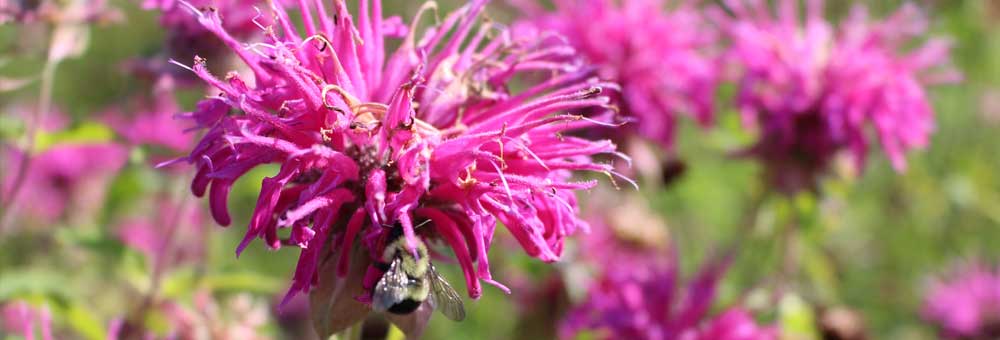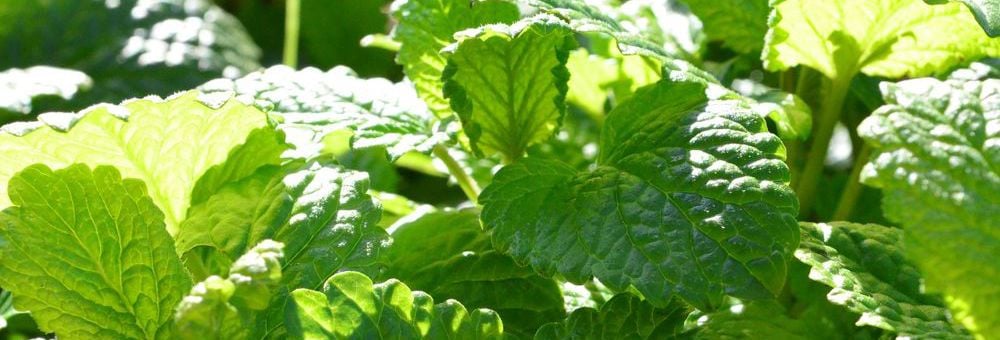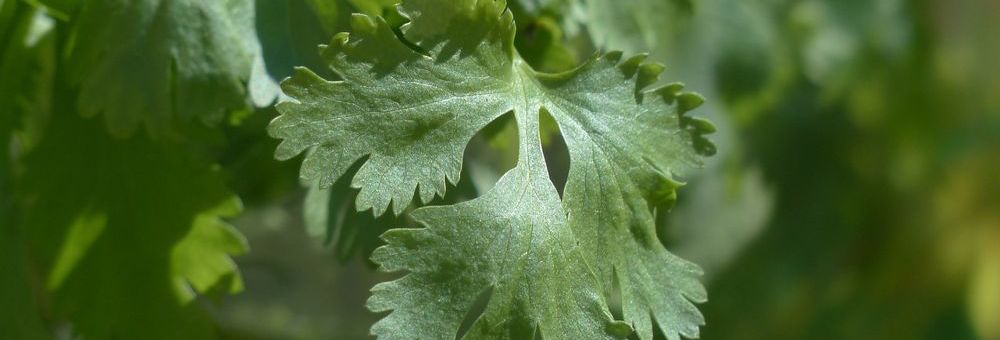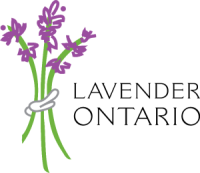Lavender and More
Unfortunately the farm was sold in 2018 and these wonderful plants are no longer there. We still make and sell all our natural skin care products using the essential oil and hydrosol we produced at the farm over 13 years it operated.
Looking to the future, when the time is right we will start growing again.
Nestled in Ontario’s beautiful farm land, we grow 10 different varieties of Lavender for our natural products, each grown for their own individual characteristics and fragrances: Lavandula Augustifolia (true lavender), Buena Vista, Sachet, Maillette, Royal Velvet, Twickle Purple, Hidcote, Martha Roderick, Munstead, and Lavandula x intermedia (Lavandin), Provence & Grosso.
We also grow other medicinal and aromatic plants for essential oil:
Monarda

Monarda, commonly known as horsemint, bee balm, or wild bergamot, belongs to the mint family, Lamiaceae (Labiatae). The genus was named for Nicolás Monardes, a Spanish physician and botanist.
Lemon Balm

Lemon balm (Melissa officinalis) also known as balm or balm mint and not to be confused with bee balm (which is genus Monarda), is a perennial herb in the mint family Lamiaceae (Labiatae), native to center-southern Europe and the Mediterranean region.
Orange Mint
Orange mint (Menta aquatica ‘Citrata’) is treasured for its very special fragrance. Its hint of citrus is tantalizing in fruit punches, teas and potpourris. The oil is an ingredient in chartreuse and perfumes.
Grapefruit Mint
This beguiling mint has a spearmint flavour with a strong grapefruit overtone. A hybrid of Mentha suaveolens and M. x piperita, grapefruit mint (Mentha x piperita ‘Grapefruit’) startles the taste buds with a truly unique, unsweetened grapefuit taste that marries well with fruit salads.
Calendula*
Calendula (Calendula officinalis) flower petals give delicate flavour and strong colour to salads, omelettes and cheese, and is used as a saffron substitute for rice. Invaluable in first-aid skin lotions and ointments.
German Chamomile*
Chamomile is one of the most popular herbs in the Western world. There are two plants known as chamomile: the more popular German chamomile (Matricaria recutita) and Roman, or English, chamomile (Chamaemelum nobile). Although they belong to different species, they are used to treat the same health problems. Both are used to calm frayed nerves, to treat various stomach problems, to relieve muscle spasms, and to treat skin conditions and mild infections.
The flowers are borne in paniculate flower heads (capitula). The white ray florets are furnished with a ligule, while the disc florets are yellow. The hollow receptacle is swollen and lacks scales. This property distinguishes German chamomile from corn chamomile (Anthemis arvensis), which has a receptacle with scales. The flowers bloom in early to midsummer, and have a strong, aromatic smell.
Hyssop

Highly fragrant, early flowering form of hyssop (Hyssopus officinalis). The plant is commonly used by beekeepers to produce a rich and aromatic honey. Herb hyssop leaves are used as an aromatic condiment. The leaves have a lightly bitter taste due to its tannins, and an intense minty aroma. Due to its intensity, it is used moderately in cooking. The herb is also used to flavor liqueur, and is part of the official formulation of Chartreuse. Will flower the first season if sown early enough (Feb-Mar). Excellent dry flower arrangements.
Coriander*

Coriander (Coriandrum sativum) is a variety grown for its seeds. Seeds add fresh, spicy flavour to soups and stews. Main ingredient in chili sauces, curries and exotic dishes. Coriander essential oil is distilled from the seeds, dry fruit or dhania of the plant. Coriander refers specifically to the seeds of the plant where as Cilantro or Chinese Parsley really refers to just the leaves.
The benefits of coriander are well documented and the medicinal uses of the seeds go back to Ancient Egypt and China. The Chinese have used coriander for hernias, dysentery, measles and nausea.
*Annuals, not always grown every year.


